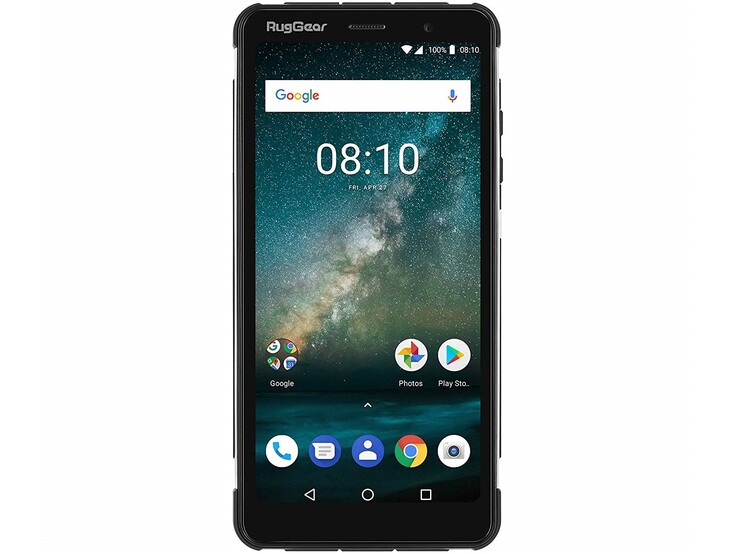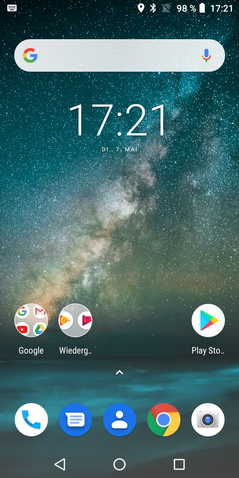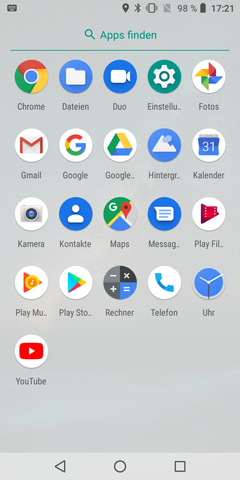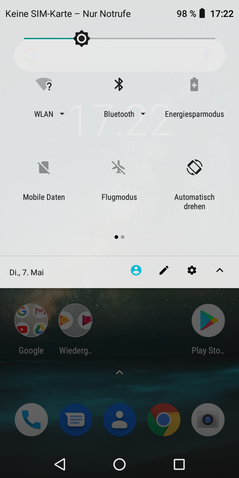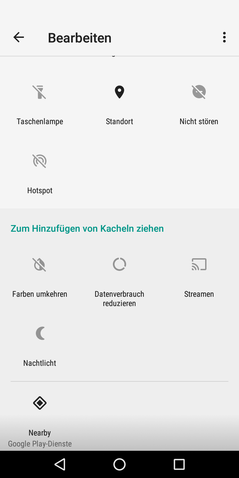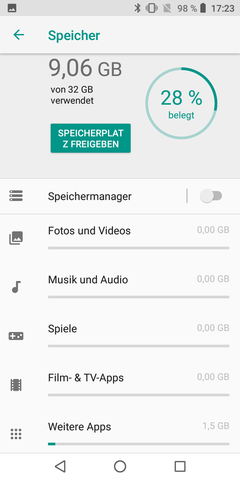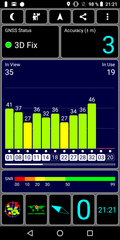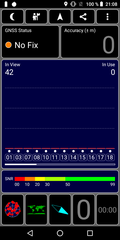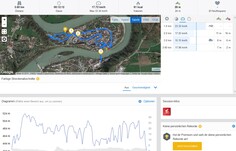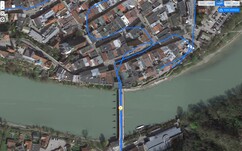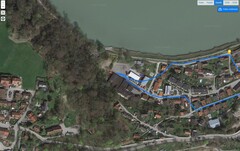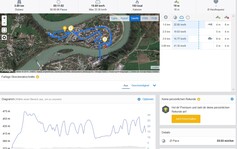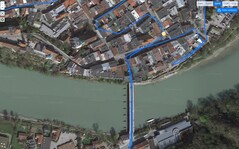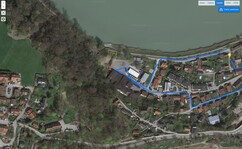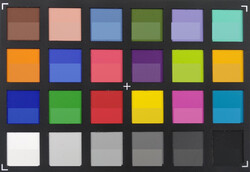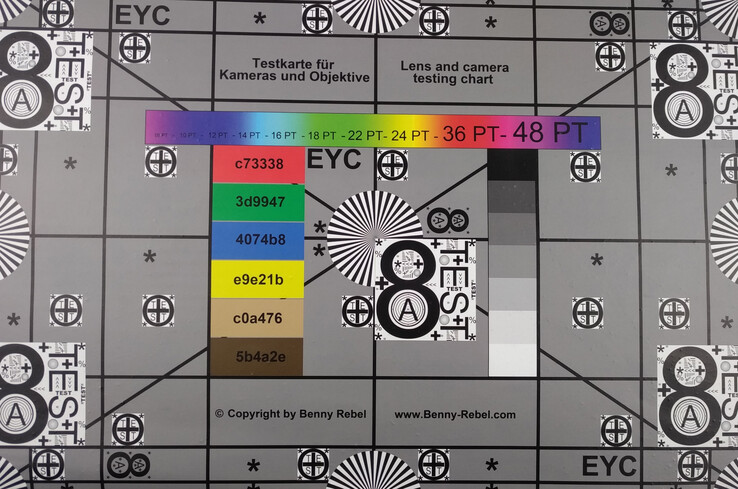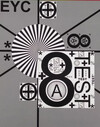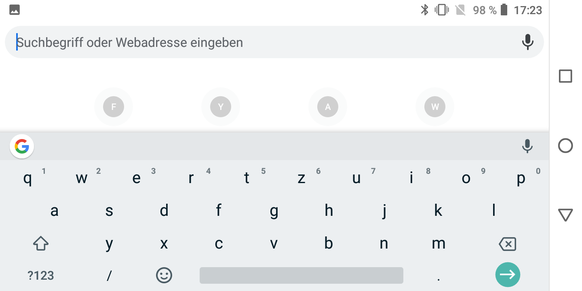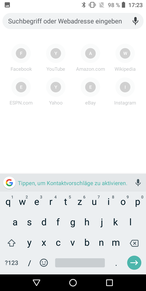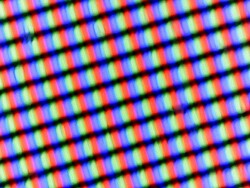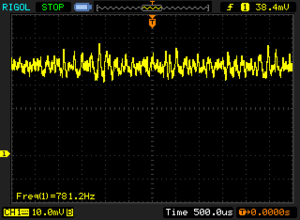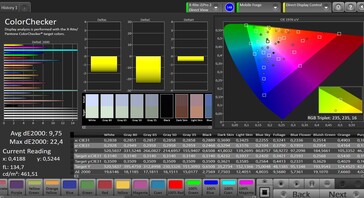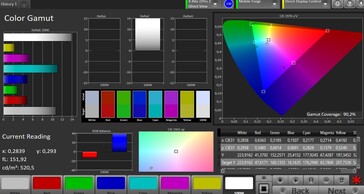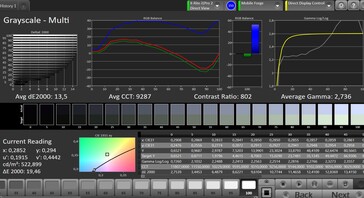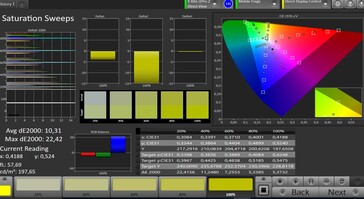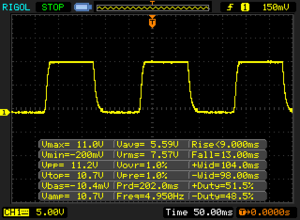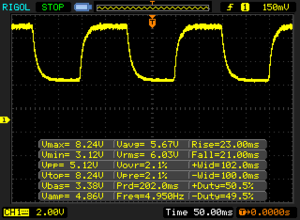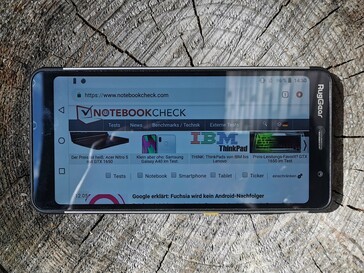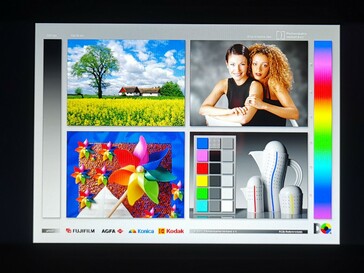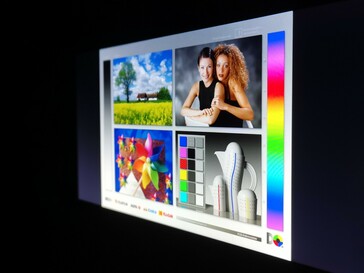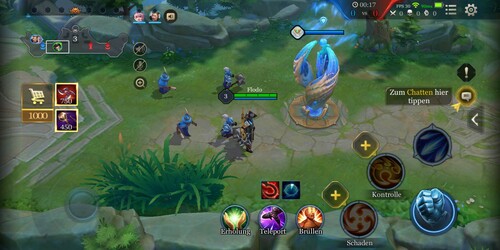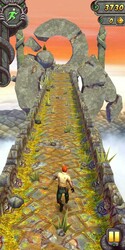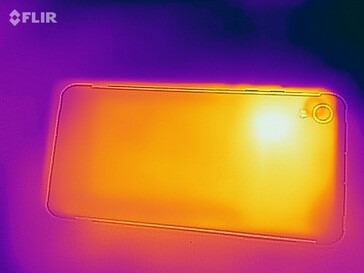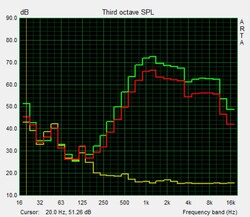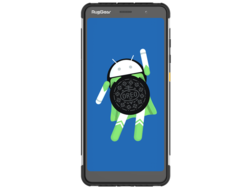RugGear RG850 Smartphone Review
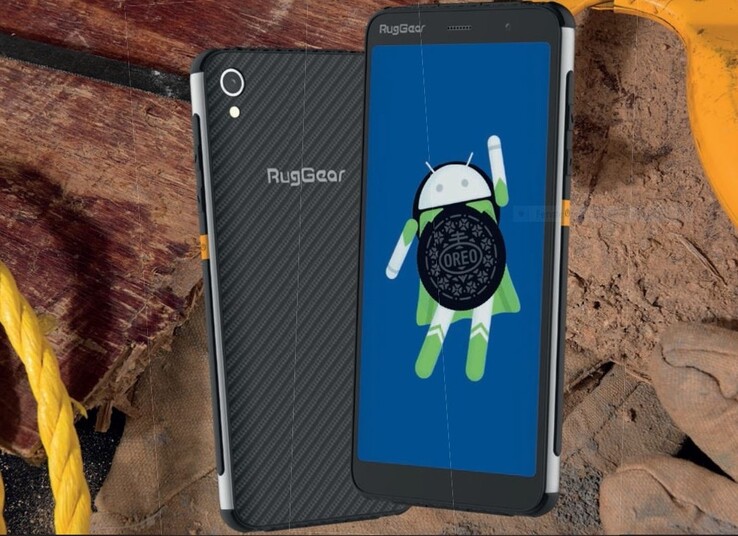
RugGear is a brand with which we are not overly familiar. The RG850 is the first device by the Chinese manufacturer that we have managed to get our hands on, although it also sells many other smartphones and accessories. RugGear even sells a case that transforms the iPhone 6, 6s, 7 and 8 into a quasi-outdoor smartphone that has an additional 2,300 mAh battery.
The RG850 has a 5.99-inch display that RugGear has paired with a Qualcomm Snapdragon 430 SoC, which integrates a Qualcomm Adreno 505 GPU, 3 GB of RAM and 32 GB of eMMC flash storage. The choice of components puts the RG850 in the lower mid-range of modern smartphones, and it should be powerful enough to handle most tasks to which you subject it.
We have chosen to compare the RG850 against other outdoor smartphones. Our comparison devices will include the Blackview BV9000 Pro, CAT S41, Crosscall Action-X3, and Ulefone Armor 6. These smartphones cost between €260 (~ US$292) and €500 (~ US$562) when we reviewed them, while the RG850 currently costs approximately €400 (~ US$449), for reference.
Case
Our RG850 review unit is well built with its mostly black plastic design. The device also has aluminum strips that run down the long sides of the frame and reportedly make it dust and water resistant. The protective covers for the card slot and headphone jack add to this impression too, although they are fiddly to open without tools.
RugGear states that the RG850 is IP68 and MIL-STD-810G certified, which it claims means that it is can survive drops of up to 1.2 meters (~4 feet). The device should also remain water-tight for up to 30 minutes when submerged in up to 1.5 meters (~5 feet) of water. MIL-STD-810G certification means that a device has successfully passed fourteen environmental and climatic tests, but keep in mind that no independent organization or agency regulates MIL-STD-810 compliance. Hence, we would recommend exercising some caution if you see something with MIL-STD-810 certification.
The RG850 is comparatively light too. Our review unit weighs just 209 g (~7.4 oz), which is lighter than all our comparison devices. The case is also only 11.5 mm (~0.45 in) thick, which helps it fit better in our hands than the other rugged smartphones that we have tested. The RG850 is noticeably longer than the CAT S41 and Crosscall Action-X3 though, but both have considerably smaller displays than our review unit.
Connectivity
RugGear equips the RG850 with a Snapdragon 430, which integrates an Adreno 505 GPU, and 3 GB of RAM. The manufacturer complements these with 32 GB of eMMC flash storage, of which approximately 23 GB was free upon first booting the device. The internal storage can be expanded with up to 128 GB microSD cards though if you run out of storage. The RG850 is a dual-SIM device too, although it has a hybrid second SIM slot, which means that you must choose between microSD card expansion and dual-SIM functionality.
The Chinese manufacturer has also equipped the device with a USB 2.0 Type-C port, which we always like to see. We would have preferred USB 3.0 or 3.1 speeds though. The RG850 has a 3.5 mm headphone jack too, which is becoming increasingly rare.
Software
RugGear currently ships the RG850 with Android 8.1 Oreo. While it had pushed out February 5, 2019 security patches to our review unit at the time of testing, there is no word on whether the Chinese manufacturer will update the device to Android 9.0 Pie and beyond.
The OS is at least a stock experience though. RugGear installs no in-house or third-party apps and has retained all original functionality like multiple user accounts. Unfortunately, the RG850 is only Widevine DRM L3 certified, which restricts it streaming DRM protected content from services like Amazon Prime Video or Netflix in SD rather than HD.
Communication & GPS
The RG850 can connect to GSM, 3G or LTE networks. The device supports LTE Cat. 4 for up to 150 MBit/s download and 50 MBit/s upload speeds. RugGear has also equipped the device with Bluetooth 4.2 functionality, while it supports up to IEEE 802.11 n Wi-Fi. Unfortunately, the RG850 does not have an NFC chip so you cannot use it with services like Google Play.
Our review unit has below-average Wi-Fi performance. The device averaged less than 50 MBit/s in both iperf3 Client Wi-Fi tests that we conducted with our reference Linksys EA8500 router. We positioned the RG850 next to the router too, eliminating the possibility of any other devices interfering with our tests. In short, the device has a bargain basement Wi-Fi modem that is much slower than those in the Crosscall Action-X3 and Ulefone Armor 6.
| Networking | |
| iperf3 transmit AX12 | |
| Ulefone Armor 6 | |
| Crosscall Action-X3 | |
| Blackview BV9000 Pro | |
| CAT S41 | |
| RugGear RG850 | |
| iperf3 receive AX12 | |
| Ulefone Armor 6 | |
| Crosscall Action-X3 | |
| Blackview BV9000 Pro | |
| RugGear RG850 | |
| CAT S41 | |
The RG850 uses BeiDou, GLONASS and GPS for location services, the accuracy of which we checked with the GPS Test app. Our review unit cannot locate us indoors, but it could do so with up to 3 meters (~10 feet) accuracy when we tested it outdoors.
We also took our review unit on a bike ride to compare its location accuracy against our trusty Garmin Edge 520. The RG850 deviated by 290 meters (~317 yards) compared to the route that the Garmin plotted, which represents an 8% deviation. Looking at the screenshots of the two routes explains the difference between the total recorded distances. The RG850 cuts corners more often than the Garmin to keep up with us. This degree of inaccuracy makes it look like we have cycled through houses rather than around them, for example. Overall, the RG850 is accurate enough for general navigation tasks, but it will not replace a dedicated navigation device.
Telephone Features & Call Quality
The RG850 uses the standard Google app suite for telephony, which operates just as it does on other devices that we tested. We experienced no issues with the Phone app during our tests either.
Our review unit has decent call quality, with our call partner remaining intelligible throughout our tests. We could even hear them in loud environments. We would recommend using the included set of headphones if you are struggling to hear the person with whom you are talking though, as these get louder than the earpiece or speakers do.
Cameras
RugGear has equipped the RG850 with an 8 MP front-facing camera that has a fixed focus, along with a 12 MP rear-facing autofocus sensor. The former takes uninspiring photos that are tricky to keep focused. Moreover, the sensor struggles to demarcate objects, while fine details are all but lost behind image noise. Colors also generally look too pale for our liking.
The default camera app has several color filters for taking playful selfies and allows you to adjust the ISO or white balance. Unfortunately, both only have a few levels to choose from, while changing either setting has a limited effect on the quality of photos that the front-facing sensor takes.
The rear-facing sensor is slightly better and can take passable photos in good lighting. The edges of objects are demarcated well and do not blur into each other, although color contours and transitions do even without zooming in on photos. The rear-facing sensor has more accurate color reproduction than its front-facing counterpart though. Moreover, macro shots look surprisingly impressive if taken in good lighting. The same cannot be said for low light shots though, which are underexposed and out of focus. Colors look overly cold too, while bright areas are completely blown out. The default camera app has the same settings for the rear-facing camera as it does when taking selfies.
Videos are of comparable quality to photos. Our review unit captures fast movements well, but the cameras take a while to adjust to sudden changes in ambient lighting. Both sensors utilize electronic image stabilization (EIS) to compensate against minor camera shakes, which worked well during our tests.
The RG850 can record videos in up to 1080p at 30 FPS, with 60 FPS recordings being restricted to 720p and lower resolutions. The default camera app can record endlessly at any resolution, but you can also limit recordings to 30 minutes, 10 minutes or 30 seconds. Furthermore, you can record VGA and QVGA videos in 90 or 120 FPS should you wish to do so.
We also tested the RG850 under controlled lighting conditions to better assess its cameras. Our review unit over and under saturates many colors compared to the ColorChecker reference color, but some colors like black and peach are spot on.
Our review unit does a good job of capturing our test chart too. The rear-facing sensor preserves fine details and structures, while text stands out well from even dark backgrounds. Contrast levels noticeably drop off in the bottom left and right corners, but this is a problem for many smartphones, so it is not overly concerning.
Accessories & Warranty
RugGear includes a USB charger, a matching Type-C cable, a screen protector and a pair of headphones in the box. The manufacturer does not sell any RG850 specific accessories at the time of writing.
The RG850 comes with 24-months limited manufacturer’s warranty. Please see our Guarantees, Return Policies and Warranties FAQ for country-specific information.
Input Devices & Operation
RugGear pre-installs Google Gboard as the default keyboard. The app operates just as well as it does on other devices that we have reviewed.
The touchscreen on our review unit responded quickly and accurately even into the corners of the display throughout our tests. The display has a rough finish though that makes single and multi-finger gestures difficult to perform. The accelerometer reliably adjusted the orientation of the display too, although the process is slightly slower than we would have liked.
Display
The RG850 has a 5.99-inch IPS display that operates natively at 1,440 x 720. Our review unit achieved an average maximum brightness of 469 cd/m² according to X-Rite i1Pro 2 and has an 88% evenly lit display. Both values put the RG850 in the midfield of our comparison table, with the Blackview BV9000 Pro leading the way thanks to its 28% brighter display. We should point out that the more practical APL50 test recorded the display in our review unit reaching a maximum of 490 cd/m² and a minimum of 0.6 cd/m².
Disappointingly, the RG850 uses pulse-width modulation (PWM) to adjust display brightness at 25% and below. The display flickers at 781 Hz, which is low enough to cause health problems like eye strain and headaches for those who are PWM sensitive.
| |||||||||||||||||||||||||
Brightness Distribution: 88 %
Center on Battery: 444 cd/m²
Contrast: 716:1 (Black: 0.62 cd/m²)
ΔE ColorChecker Calman: 9.75 | ∀{0.5-29.43 Ø4.79}
ΔE Greyscale Calman: 13.5 | ∀{0.09-98 Ø5}
90.2% sRGB (Calman 2D)
Gamma: 2.736
CCT: 9287 K
| RugGear RG850 IPS, 1440x720, 6" | Ulefone Armor 6 IPS LCD, 2246x1080, 6.2" | CAT S41 IPS, 1920x1080, 5" | Crosscall Action-X3 IPS, 1280x800, 5" | Blackview BV9000 Pro IPS, 1440x720, 5.7" | |
|---|---|---|---|---|---|
| Screen | 56% | 17% | 35% | 33% | |
| Brightness middle (cd/m²) | 444 | 418 -6% | 537 21% | 417 -6% | 621 40% |
| Brightness (cd/m²) | 469 | 413 -12% | 506 8% | 425 -9% | 598 28% |
| Brightness Distribution (%) | 88 | 91 3% | 86 -2% | 91 3% | 91 3% |
| Black Level * (cd/m²) | 0.62 | 0.2 68% | 0.9 -45% | 0.29 53% | 0.64 -3% |
| Contrast (:1) | 716 | 2090 192% | 597 -17% | 1438 101% | 970 35% |
| Colorchecker dE 2000 * | 9.75 | 4.5 54% | 5.02 49% | 7.12 27% | 5.5 44% |
| Colorchecker dE 2000 max. * | 22.4 | 6.8 70% | 7.98 64% | 10.19 55% | 10 55% |
| Greyscale dE 2000 * | 13.5 | 3.3 76% | 5.3 61% | 6.1 55% | 5.1 62% |
| Gamma | 2.736 80% | 2.24 98% | 2.154 102% | 2.687 82% | 2.52 87% |
| CCT | 9287 70% | 7205 90% | 7226 90% | 7687 85% | 7362 88% |
* ... smaller is better
Screen Flickering / PWM (Pulse-Width Modulation)
| Screen flickering / PWM detected | 781 Hz | ≤ 25 % brightness setting | |
The display backlight flickers at 781 Hz (worst case, e.g., utilizing PWM) Flickering detected at a brightness setting of 25 % and below. There should be no flickering or PWM above this brightness setting. The frequency of 781 Hz is quite high, so most users sensitive to PWM should not notice any flickering. In comparison: 53 % of all tested devices do not use PWM to dim the display. If PWM was detected, an average of 8152 (minimum: 5 - maximum: 343500) Hz was measured. | |||
The RG850 also has a 0.62 cd/m² black value, which is comparatively high for an IPS display. The high black value gives blacks a light gray haze to them and results in an underwhelming 716:1 contrast ratio, which is beaten by all but the CAT S41 of our comparison devices.
CalMAN analysis also shows that the display has a blue tint to it. We managed to counteract this slightly by activating the night-light mode, which reduces the blue light that the display emits while boosting the red light that it produces. This functions just like any other eye-saver that you may have used previously.
Display Response Times
| ↔ Response Time Black to White | ||
|---|---|---|
| 22 ms ... rise ↗ and fall ↘ combined | ↗ 9 ms rise | |
| ↘ 13 ms fall | ||
| The screen shows good response rates in our tests, but may be too slow for competitive gamers. In comparison, all tested devices range from 0.1 (minimum) to 240 (maximum) ms. » 47 % of all devices are better. This means that the measured response time is similar to the average of all tested devices (20.3 ms). | ||
| ↔ Response Time 50% Grey to 80% Grey | ||
| 44 ms ... rise ↗ and fall ↘ combined | ↗ 23 ms rise | |
| ↘ 21 ms fall | ||
| The screen shows slow response rates in our tests and will be unsatisfactory for gamers. In comparison, all tested devices range from 0.165 (minimum) to 636 (maximum) ms. » 72 % of all devices are better. This means that the measured response time is worse than the average of all tested devices (31.7 ms). | ||
The RG850 is usable outdoors, but we would recommend avoiding direct sunlight where possible. The display gets bright enough to remain readable on a sunny day, but it has a glossy and highly reflective finish. Moreover, its low contrast ratio makes content look washed out and difficult to read, especially when you are already battling against dazzling reflections.
The RG850 has decent viewing angles thanks to its IPS panels, although there are some deficiencies. We noticed no color distortions at acute viewing angles, but brightness levels drop off slightly. Overall, you should have no problems with reading the display from practically any angle other than when reflections hinder your view.
Performance
RugGear has equipped the RG850 with a Snapdragon 430 SoC, which integrates an Adreno 505 GPU, along with 3 GB of RAM and 32 GB of eMMC flash storage. These components, which are identical to those in the Action-X3, place the RG850 firmly in the lower mid-range of smartphones.
Accordingly, our review unit and the Action-X3 achieve comparable benchmark results. However, these are rather below average compared to our other comparison devices.
The underwhelming benchmark scores do not reflect our experiences with the device in daily use though. Most apps loaded promptly and ran well; we had no system performance issues either. Inexplicably, we could not get GFXBench to work despite several installations and reboots.
| PCMark for Android | |
| Work performance score (sort by value) | |
| RugGear RG850 | |
| Ulefone Armor 6 | |
| CAT S41 | |
| Crosscall Action-X3 | |
| Blackview BV9000 Pro | |
| Average Qualcomm Snapdragon 430 (MSM8937) (3347 - 5290, n=18) | |
| Work 2.0 performance score (sort by value) | |
| RugGear RG850 | |
| Ulefone Armor 6 | |
| CAT S41 | |
| Crosscall Action-X3 | |
| Blackview BV9000 Pro | |
| Average Qualcomm Snapdragon 430 (MSM8937) (3408 - 3892, n=16) | |
| AnTuTu v7 - Total Score (sort by value) | |
| RugGear RG850 | |
| Ulefone Armor 6 | |
| Crosscall Action-X3 | |
| Average Qualcomm Snapdragon 430 (MSM8937) (44992 - 59990, n=11) | |
The RG850 and Action-X3 achieved comparable results in browser benchmarks too. Both devices sit in the lower midfield of our comparison tables, but subjectively websites still load quickly. Media content takes a bit longer to load though.
| WebXPRT 3 - Overall | |
| Average of class Smartphone (38 - 380, n=41, last 2 years) | |
| RugGear RG850 (Chrome 73) | |
| Average Qualcomm Snapdragon 430 (MSM8937) (24 - 72, n=3) | |
| Octane V2 - Total Score | |
| Average of class Smartphone (2228 - 121337, n=202, last 2 years) | |
| Ulefone Armor 6 (Chrome 71) | |
| CAT S41 (Chrome 67) | |
| Blackview BV9000 Pro (Chrome Mobile 53) | |
| RugGear RG850 (Chrome 73) | |
| Crosscall Action-X3 (Chrome 68) | |
| Average Qualcomm Snapdragon 430 (MSM8937) (2604 - 3438, n=18) | |
| Mozilla Kraken 1.1 - Total | |
| Blackview BV9000 Pro (Chrome Mobile 53) | |
| RugGear RG850 (Chrome 73) | |
| Crosscall Action-X3 (Chrome 68) | |
| Average Qualcomm Snapdragon 430 (MSM8937) (10396 - 14709, n=18) | |
| CAT S41 (Chrome 67) | |
| Ulefone Armor 6 (Chrome 71) | |
| Average of class Smartphone (257 - 28190, n=157, last 2 years) | |
| JetStream 1.1 - Total Score | |
| Ulefone Armor 6 (Chrome 71) | |
| Blackview BV9000 Pro (Chrome Mobile 53) | |
| CAT S41 (Chrome 67) | |
| Average Qualcomm Snapdragon 430 (MSM8937) (17.6 - 21.5, n=16) | |
| RugGear RG850 (Chrome 73) | |
| Crosscall Action-X3 (Chrome 68) | |
* ... smaller is better
RugGear has equipped the RG850 with 32 GB of eMMC flash storage that performed slightly better than expected in all but one of AndroBench’s benchmarks. Our review unit has slower storage than all our comparison devices though.
The RG850 has an above average microSD card reader. Our review unit achieved faster transfer speeds overall with our reference Toshiba Exceria Pro M501 than all our comparison devices, although it is a shame that we could only format the card as external rather than internal storage.
| RugGear RG850 | Ulefone Armor 6 | CAT S41 | Crosscall Action-X3 | Blackview BV9000 Pro | Average 32 GB eMMC Flash | Average of class Smartphone | |
|---|---|---|---|---|---|---|---|
| AndroBench 3-5 | 35% | -18% | -3% | 20% | 4% | 1331% | |
| Sequential Read 256KB (MB/s) | 280.1 | 290.8 4% | 253 -10% | 264.7 -5% | 244.7 -13% | 242 ? -14% | 2211 ? 689% |
| Sequential Write 256KB (MB/s) | 120.7 | 188.4 56% | 117.2 -3% | 139.3 15% | 174.6 45% | 100.5 ? -17% | 1827 ? 1414% |
| Random Read 4KB (MB/s) | 39 | 81.3 108% | 65.5 68% | 47 21% | 72.6 86% | 43.1 ? 11% | 294 ? 654% |
| Random Write 4KB (MB/s) | 12.64 | 19.87 57% | 12.99 3% | 8.4 -34% | 12.72 1% | 22.3 ? 76% | 337 ? 2566% |
| Sequential Read 256KB SDCard (MB/s) | 83.9 ? | 75.6 ? -10% | 23.87 -72% | 84.1 ? 0% | 76.7 ? -9% | 71.8 ? -14% | |
| Sequential Write 256KB SDCard (MB/s) | 63.7 ? | 60.1 ? -6% | 5 -92% | 56.2 ? -12% | 68.5 ? 8% | 52.9 ? -17% |
Games
The Adreno 505 can play most games smoothly. Arena of Valor ran without any issues even at high graphics, but complex games like PUBG Mobile are beyond what the GPU can handle.
The touchscreen and accelerometer worked perfectly during our gaming tests too. We experienced no latency problems in fast-paced games like Temple Run 2 either, but the rough finish to the display quickly made us tire of performing swiping gestures.
Emissions
Temperature
The RG850 remains pleasantly cool when idling. Surface temperatures on our review unit never exceeded 30 °C (86°F), but things changed drastically when we subjected the device to sustained load. Temperatures then rise to 46 °C (~115 °F), which will feel hot to the touch. We did not notice any thermal throttling though, although you may struggle to hold the RG850 when gaming for prolonged periods.
(-) The maximum temperature on the upper side is 46 °C / 115 F, compared to the average of 35.2 °C / 95 F, ranging from 21.9 to 247 °C for the class Smartphone.
(+) The bottom heats up to a maximum of 38.9 °C / 102 F, compared to the average of 34 °C / 93 F
(+) In idle usage, the average temperature for the upper side is 29 °C / 84 F, compared to the device average of 32.9 °C / 91 F.
Speakers
The RG850 has a mono speaker that reached a maximum of 79.5 dB(A) during our tests. The speaker reproduces hardly any bass, but the audio it reproduces is listenable. In short, the RG850 is good enough for occasionally playing media content, but we would advise using external speakers or headphones where possible for a better listening experience.
You could do the latter either with Bluetooth or the headphone jack, which both worked perfectly in our tests. The latter keeps headphone cables firmly in place too.
RugGear RG850 audio analysis
(±) | speaker loudness is average but good (79.5 dB)
Bass 100 - 315 Hz
(-) | nearly no bass - on average 29.2% lower than median
(±) | linearity of bass is average (9.9% delta to prev. frequency)
Mids 400 - 2000 Hz
(±) | higher mids - on average 7.5% higher than median
(±) | linearity of mids is average (8.8% delta to prev. frequency)
Highs 2 - 16 kHz
(+) | balanced highs - only 1.9% away from median
(+) | highs are linear (3% delta to prev. frequency)
Overall 100 - 16.000 Hz
(±) | linearity of overall sound is average (26.6% difference to median)
Compared to same class
» 68% of all tested devices in this class were better, 5% similar, 27% worse
» The best had a delta of 11%, average was 35%, worst was 134%
Compared to all devices tested
» 81% of all tested devices were better, 4% similar, 15% worse
» The best had a delta of 4%, average was 24%, worst was 134%
Crosscall Action-X3 audio analysis
(±) | speaker loudness is average but good (74.8 dB)
Bass 100 - 315 Hz
(-) | nearly no bass - on average 30% lower than median
(±) | linearity of bass is average (8.8% delta to prev. frequency)
Mids 400 - 2000 Hz
(±) | higher mids - on average 6.2% higher than median
(±) | linearity of mids is average (8.7% delta to prev. frequency)
Highs 2 - 16 kHz
(+) | balanced highs - only 1.7% away from median
(+) | highs are linear (2.7% delta to prev. frequency)
Overall 100 - 16.000 Hz
(±) | linearity of overall sound is average (25.7% difference to median)
Compared to same class
» 63% of all tested devices in this class were better, 7% similar, 30% worse
» The best had a delta of 11%, average was 35%, worst was 134%
Compared to all devices tested
» 78% of all tested devices were better, 5% similar, 17% worse
» The best had a delta of 4%, average was 24%, worst was 134%
Battery Life
Power Consumption
The power consumption of the RG850 is on par with what we expect from a Snapdragon 430 powered device. Our review unit consumes a minimum of 1.2 W at idle and a maximum of 6 W under load, the latter of which is better than all our comparison devices. Overall, the RG850 is more power efficient than practically all the devices in our comparison table.
RugGear includes a 10 W charger in the box. The charger is powerful enough to keep the RG850 charging even when the device is being pushed to its limits.
| Off / Standby | |
| Idle | |
| Load |
|
Key:
min: | |
| RugGear RG850 4000 mAh | Ulefone Armor 6 5000 mAh | CAT S41 5000 mAh | Crosscall Action-X3 3500 mAh | Blackview BV9000 Pro 4180 mAh | Average Qualcomm Snapdragon 430 (MSM8937) | Average of class Smartphone | |
|---|---|---|---|---|---|---|---|
| Power Consumption | 3% | -14% | -16% | -7% | 1% | -18% | |
| Idle Minimum * (Watt) | 1.2 | 0.9 25% | 1.4 -17% | 1.1 8% | 1.04 13% | 0.918 ? 23% | 0.853 ? 29% |
| Idle Average * (Watt) | 1.7 | 2.04 -20% | 2.2 -29% | 1.9 -12% | 2.14 -26% | 2.01 ? -18% | 1.43 ? 16% |
| Idle Maximum * (Watt) | 2.6 | 2.09 20% | 2.8 -8% | 2.9 -12% | 2.17 17% | 2.28 ? 12% | 1.609 ? 38% |
| Load Average * (Watt) | 3.8 | 3.4 11% | 4.1 -8% | 4.8 -26% | 5.11 -34% | 3.97 ? -4% | 7.09 ? -87% |
| Load Maximum * (Watt) | 6 | 7.31 -22% | 6.4 -7% | 8.4 -40% | 6.37 -6% | 6.46 ? -8% | 11.2 ? -87% |
* ... smaller is better
Battery Life
The RG850 has a 4,000 mAh battery, which is smaller than all but the BV9000 Pro of our comparison devices. Our review unit lasted just over 14 hours in our practical Wi-Fi test, which is decent for a device with a 4,000 mAh battery. The Armor 6 and CAT S41 achieved slightly longer runtimes, but not massively so. In short, the RG850 has impressive battery life that will easily see you through an entire working day.
| RugGear RG850 4000 mAh | Ulefone Armor 6 5000 mAh | CAT S41 5000 mAh | Crosscall Action-X3 3500 mAh | Blackview BV9000 Pro 4180 mAh | |
|---|---|---|---|---|---|
| Battery runtime | |||||
| WiFi v1.3 (h) | 14.3 | 14.6 2% | 15.9 11% | 14.1 -1% | 9.7 -32% |
Pros
Cons
Verdict
The RugGear RG850 is a competent mid-range smartphone that stands out from its contemporaries mainly because of its stock Android OS. While it under-performs compared to many of our comparison devices, it still maintained smooth performance even in demanding apps. The camera, display and Wi-Fi performance are underwhelming too, but not significantly so.
The RugGear RG850 is a decent mid-range smartphone that manages to be slimmer than its competitors without sacrificing on features or build quality.
The RG850’s slim design is another area that distinguishes it from other rugged smartphones. The device does not feel as bulky as many of its contemporaries do and fits nicely in our hands despite having a 6-inch display. Overall, the RugGear RG850 is a compelling proposition for those who are after a smartphone that can survive being dropped and thrown about without being the size and shape of a brick as many rugged smartphones are.
RugGear RG850
- 05/12/2019 v6 (old)
Mike Wobker




